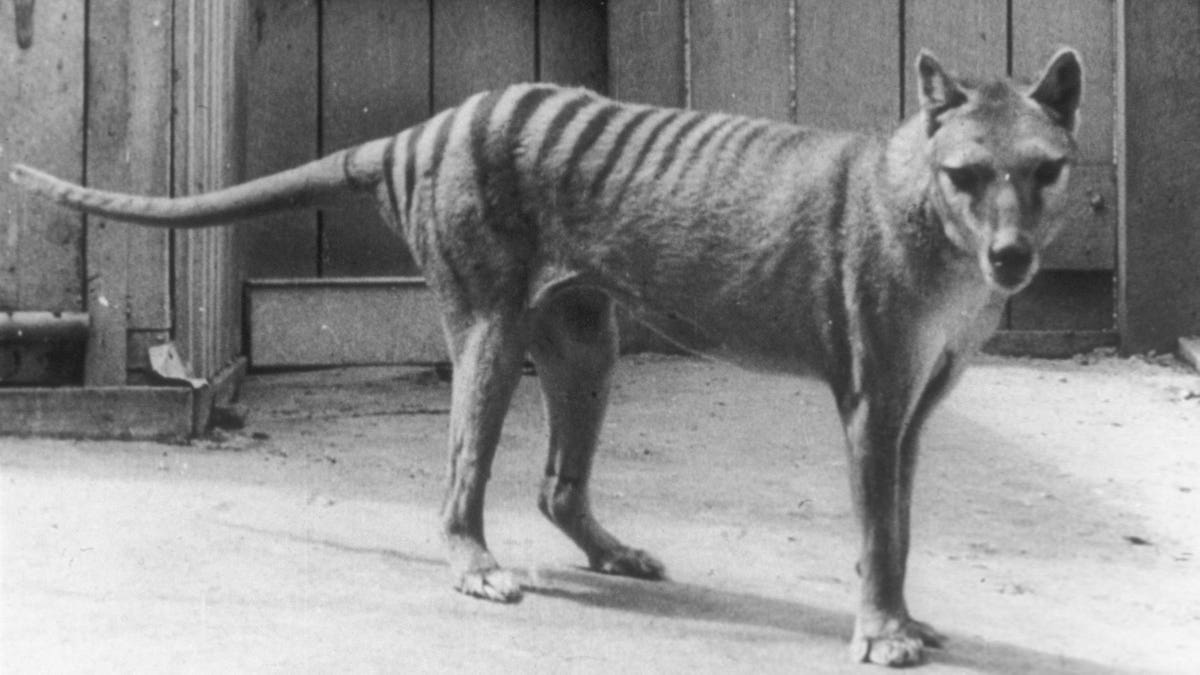Human hunters may have played large role in driving cave bear to extinction, study says
New evidence suggests humans played a larger role than previously thought in driving the cave bear to extinction. Researchers have found that the enormous bears, which completely died out about 24,000 years ago and typically lived in Asia and Europe, were driven from caves by human hunters thousands of years ago.
Nearly 100 years ago, the last Tasmanian tiger died, ending the reign of a species that dates back to 1000 BC. Now scientists are looking to bring them back from the dead.
Known as Thylacine, the carnivorous marsupial once roamed the Australian outback before the last known survivor of the striped species died in 1936. Scientists now plan to use genetic technology, ancient DNA collection, and artificial reproduction to bring the tiger back.
"We would strongly advocate that first and foremost we need to protect our biodiversity from further extinctions, but unfortunately we are not seeing a slowing down in species loss," said Andrew Pask, a professor at the University of Melbourne leading the project at the Thylacine Integrated Genetic Restoration Research Lab.
"This technology offers a chance to correct this and could be applied in exceptional circumstances where cornerstone species have been lost."

The last Tasmanian Tiger, named Benjamin, went extinct in 1936 not long after his species had been granted a protective status. (Getty Images)
ENDANGERED CALIFORNIA CONDORS RELEASED IN REDWOOD NATIONAL AND STATE PARKS FOR FIRST TIME SINCE 1892
The thylacine project is working with technology investor Ben Lamm's Colossal Biosciences and Harvard Medical School geneticist George Church. Lamm's organization has also launched a $15 million project to bring the woolly mammoth back from extinction.
The last living thylacine was named Benjamin and died in 1936 at the Beaumaris Zoo in Tasmania, shortly after the animal species had been given protected status.
The team plans to first design a genome for the tiger and compare it to the dunnart, its closest living relative. Scientists will then use CRISPR gene editing technology to eventually create an embryo.
"We then take living cells from our dunnart and edit their DNA every place where it differs from the thylacine. We are essentially engineering our dunnart cell to become a Tasmanian tiger cell," Pask claimed.
MONARCH BUTTERFLIES ARE OFFICIALLY ON THE ENDANGERED SPECIES LIST
The researcher concluded, "With this partnership, I now believe that in ten years’ time we could have our first living baby thylacine since they were hunted to extinction close to a century ago."





















